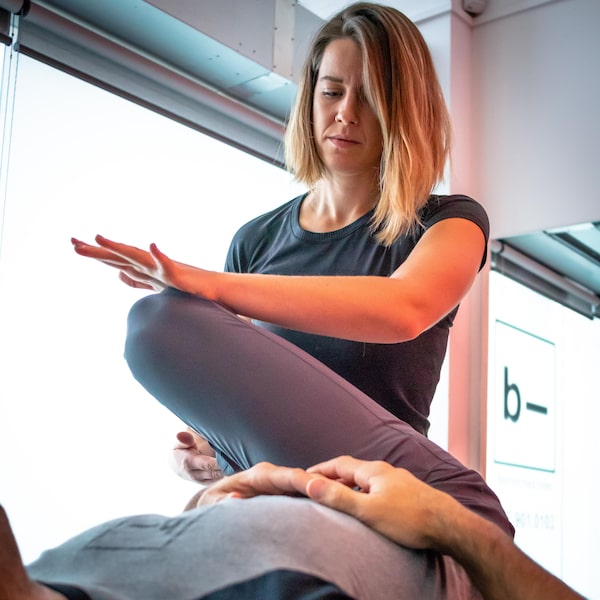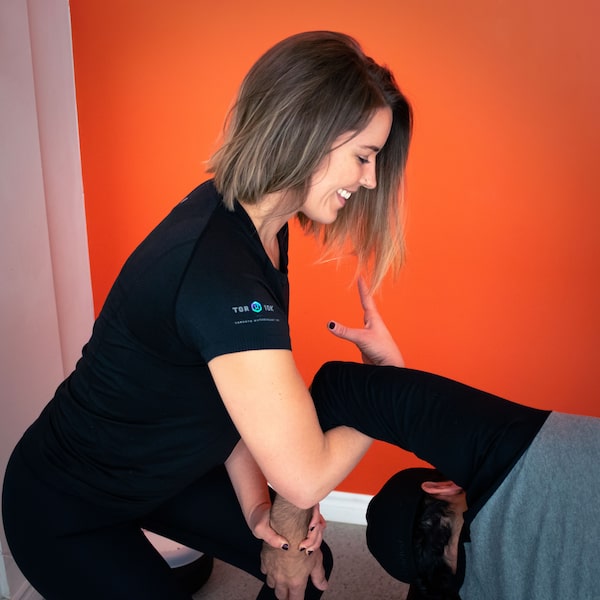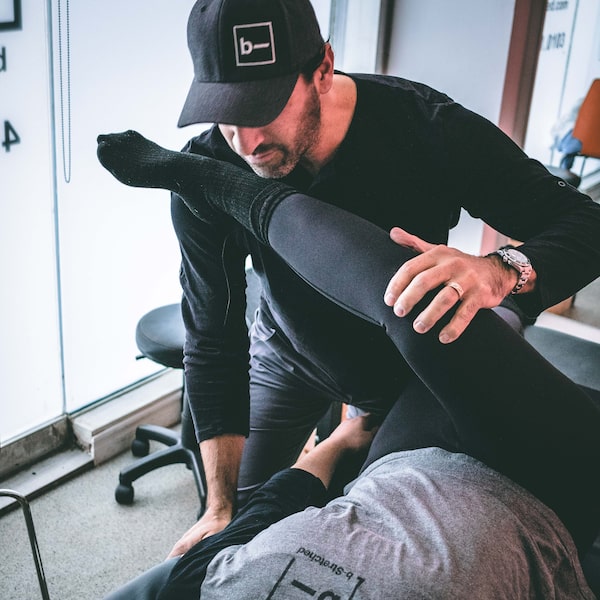
A team assistant stretches West Indies' Shane Dowrich during a cricket match at the Kensington Oval in Bridgetown, Barbados, on Jan. 25, 2019.Ricardo Mazalan/The Associated Press
There’s a growing fitness trend that doesn’t involve lifting heavy things, pumping your limbs at lightning speed or forming even the tiniest bead of sweat. But if you like doing any or all of these things, it could help you do them better.
Fascial stretch therapy (FST) is assisted stretching: a therapist works muscles and fascia to improve performance, flexibility and help prevent injury. “People come to us for relaxation and for relief from stiffness and pain,” says Justin Gould, co-founder of Flxme Stretch Therapy Studio based in Toronto. That may sound especially appealing to many after months of working from home, decreased outings and endless online Zoom workouts.
FST, which targets muscles and the connective tissue that surrounds and encompasses the muscles, bones and joints, is not the stretching you’re probably used to. For starters, FST is passive and does not require you to hold a pose. “With assisted stretching the body is completely relaxed,” Gould says. This lets the therapist isolate muscles and manipulate them more precisely.

Toronto-based Flxme Stretch Therapy Studio helps relax the body using assisted stretching techniques.Douglas MacKellar/B Stretched
Appointments typically start with an assessment and basic movements for the stretch therapist to see where patients need attention. Sarah Mariano started offering FST in 2014, several years ahead of many others in Toronto. A former athlete, personal trainer and yoga instructor, her early clients were young moms and CrossFit athletes. Today, people of every age and professional background are seeking an assisted stretch.
I visited Mariano with hopes of relieving tight hamstrings. During my session she assessed my range of motion by having me do squats and lunges, and quickly determined that one hip was higher than the other. After she gently pulled and twisted my legs, I realized every muscle in my body had been holding decades of tension. The stretching is relaxing though not without sensation, which comes from being guided deeper into a position that would be challenging to do on your own.
Fans of massage or manual therapy are natural candidates for FST sessions. What might be new for people is the use of straps for stability and having the therapist use their own bodies to move and stretch yours. Mariano might stand on the table over top of a client for a different angle, or use her legs and feet to change their position.

People who enjoy massage or manual therapy are natural candidates for assisted stretching.Douglas MacKellar/B Stretched
“The reality is that most people hate stretching themselves, but assisted stretching is and feels, completely different,” says Marco Capizzano, a chiropractor and founder of b-Stretched, a wellness studio with multiple locations in Toronto. He jokes that his team provides the lazy person’s version of yoga, where the therapist does the work and the client reaps the benefits. “Atheletes, whether professional or recreational, and people who are active and focused on their health love stretching since it helps them reduce the risk of injury, perform better and enhances their sense of well-being,” he says.
Physiotherapist Tyson Plesuk, co-owner of Movement Sports Clinic in Calgary, sees fascial stretching as complimentary to working with health practitioners such as himself. “The goal for the majority of patients is to improve their mobility, control of their movements and strength.” The addition of FST can also help reduce tightness for people who stay in specific postures for extended periods of time, like those of us who spend hours at a desk.

Toronto-based wellness studio b-Stretched helps clients release muscular tension and reduce the risk of injury.Douglas MacKellar/B Stretched
Assisted stretching is an unregulated industry so those seeking help with injuries may prefer a health expert such as a chiropractor, physiotherapist or osteopath who has FST training. “There is no one therapy that fixes everything,” Plesuk says. “The true magic happens with a combination of a well-structured plan to address both mobility and strength issues, where the patient also completes active movements and exercises.”
So we can’t rely on assisted stretching to fix all of our problems, but the growing interest in FST and its benefits proves that those of us who come up with excuses to avoid stretching on our own - or even openly admit to hating it - have found a winning solution.
Sign up for the weekly Health & Wellness newsletter for the latest news and advice.